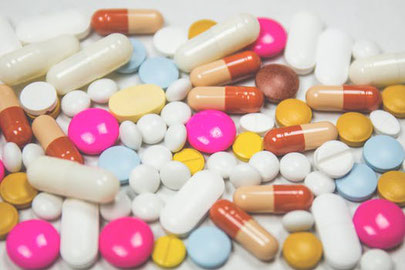- Home
- Blog
- News
- Basics
- Sources
- Agencies, Regulatory & Organisations
- CERSI Excipients Browser
- Excipient Report
- Excipient DMF List
- EXCiPACT Certified Companies
- Excipient Documentation
- Excipient EINECS Numbers
- Excipient E-Numbers
- FDA Inactive Ingredient List
- FDA GRAS Substances (SCOGS) Database
- IPEC Americas
- USP - U.S. Pharmacopeia
- Definitions
- Whitepapers / Publications
- Supplier
- Services
- Media
- Events
- 1st pharmaexcipients Poster Award
- Event Calendar
- Events featured by pharma-excipients
- 4th Annual Formulation & Drug Delivery Congress
- DDF Summit
- ExcipientFest Americas
- ExcipientFest Asia
- Global CompliancePanel
- International Conference and Exhibition on Pharmaceutics & Novel Drug Delivery Systems
- Formulation & Drug Delivery USA Congress
- Laboratory Medicine 2018
- Making Pharmaceuticals Europe
- Making Pharmaceuticals Exhibition
- Pharma Integrates
- PharmaExcipients China @CPhI China
- TTC Technology Training Center
- Jobs
- Online Sourcing
- Contact
07. May 2018
The aim of this research was to design and evaluate a hydrophilic matrix system for sustained release of glipizide, a weakly acidic poor soluble drug. A combination of inclusion complexation and microenvironmental pH modification techniques was utilized to improve the dissolution and pH-independent release of glipizide. Hydroxypropyl-β-cyclodextrin (HP-β-CD) was used as the complexation agent while sodium citrate and magnesium oxide (MgO) were used as model pH modifiers. The hydrophilic...
08. November 2017
Colon delivery systems for oral administration have grown in popularity since the 1990s, primarily because of the increasing incidence of inflammatory bowel disease (IBD) that has broadly been demonstrated to benefit from topical pharma- cological treatment.
30. June 2017
The purpose of this study is to evaluate the photostabilization mechanism of risperidone tablets. Risperidone is
widely used for sensory integration disorder. It is formulated as tablets, orally disintegrating tablets, fine granules,
oral solutions, and intramuscular injections.
19. April 2017
Abstract The objective of this study was to investigate the effect of the different physiological parameters of the gastrointestinal (GI) fluid (pH, buffer capacity, and ionic strength) on the in vitro release of the weakly basic BCS class II drug quetiapine fumarate (QF) from two once-a-day matrix tablet formulations (F1 and F2) developed as potential generic equivalents to Seroquel® XR. F1 tablets were prepared using blends of high and low viscosity grades of hydroxypropyl methylcellulose...
08. March 2017
Abstract This study was designed to develop a once-daily controlled-release matrix tablet of aceclofenac 200 mg (AFC-CR) with dual release characteristics and to investigate the role of an alkalizer in enhancing drug solubility and reducing the occurrence of gastroduodenal mucosal lesions. Two formulation approaches were employed, namely a monolithic matrix tablet and a bilayered tablet. In vitro dissolution studies of AFC-CR tablets were carried out in simulated intestinal fluid (pH 6.8...
20. December 2016
Abstract Salt disproportionation (a conversion from the ionized to the neutral state) in solid formulations is a potential concern during manufacturing or storage of products containing a salt of the active pharmaceutical ingredient (API) due to the negative ramifications on product performance. However, it is challenging to find an effective approach to prevent or mitigate this undesirable reaction in formulations. Hence, the overall objective of this study is to explore novel formulation...
30. August 2016
Abstract In situ -gelling systems has the great potential in the wide areas of drug delivery. The application areas of such systems are broad and these systems can be formulated not only as gels but also as in situ gelling nanospheres, microspheres and liposomes. To overcome the drawbacks associated with conventional drug delivery systems and take advantages of both solutions and gels, such as accurate dosing, ease of administration of the former and longer precorneal residence of the latter, a...
30. August 2016
Abstract Pharmacopoeias, as standard references for pharmaceutical drug specifi cations and reference standards in the form of monographs, play a pivotal role to assure drug quality and safety. With emphasis on the activities concerning non-biological complex drugs (NBCDs), the mechanisms by which new monographs are introduced into the European and the US pharmacopoeias are presented. Introduction Over the last decades we came to realize that high molecular weight drugs of biological origin,...
10. July 2016
Abstract: The aim of the present study was to design a new pH–enzyme double-dependent mesalamine colon-specific delivery system. The drug release behaviors in vitro and pharmacokinetics and biodistribution in vivo were further evaluated. The mean particle diameters of mesalamine-coated microparticles were 312.2 μm. In vitro, a small amount of mesalamine was released in HCl at a pH of 1.2 and PBS medium at a pH of 7.4 for 5 hours, and 71% of the entrapped mesalamine was further released...
25. June 2016
Abstract A facile controlled-release nanogels delivery system has been developed by using hydroxypropyl methylcellulose (HPMC) hybrid nanogels as encapsulation shell materials, which were synthesized by surfactant-free polymerization in aqueous solution. The effects of reaction time and cross-linker concentration on the size of the nanogels have been studied. The results showed that in a certain range, the particle size decreased with increasing reaction time and increasing concentration of...


